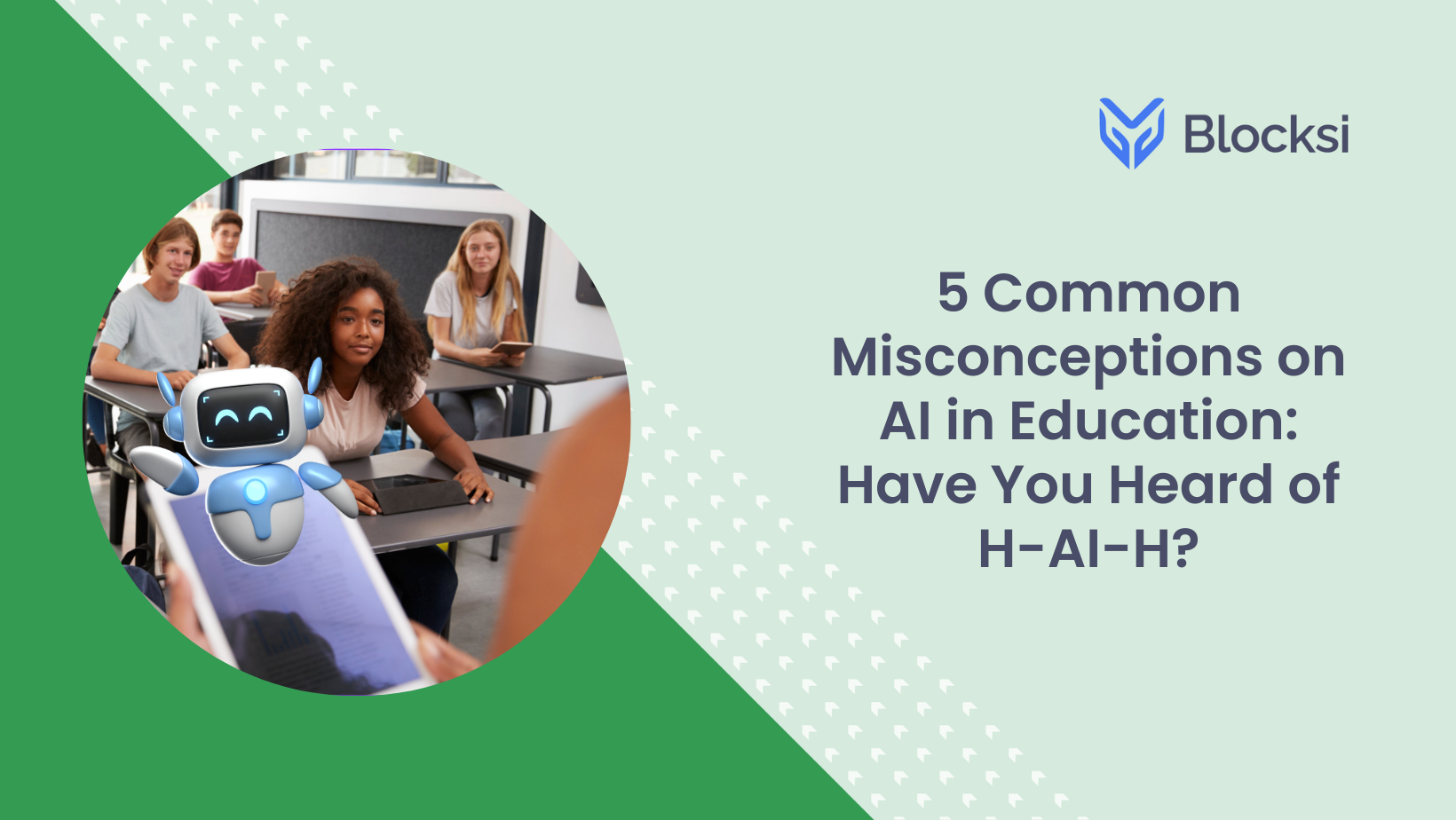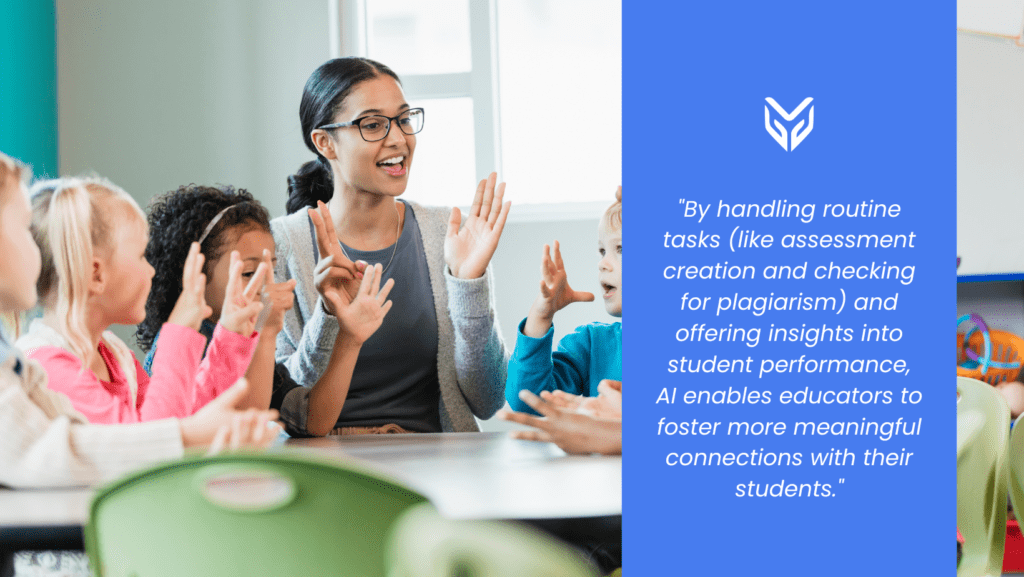NEWS
5 Common Misconceptions on AI in Education: Have You Heard of H-AI-H?

With AI gaining more prominence in education, more and more schools across the US are publishing roadmaps to guide the implementation of AI in education. Leveraging AI to support personalized learning, enhance productivity, and unburden teachers is essential for 21st-century teaching.
However, as AI starts integrating various parts of the learning and teaching processes, various misconceptions about AI are surfacing. That is why we are debunking these myths to understand the transformative technology better. Keep reading to debunk them with us and learn about the H-AI-H concept and how we implement it in our solution.
Misconception 1: AI Will Replace Teachers
A prevalent concern is the misconception that AI aims to replace human educators. In reality, AI serves as a powerful assistant, automating routine tasks to allow teachers more time for personalized interactions and nuanced teaching methods. It complements the human touch in education, offering valuable insights to enhance the overall teaching experience.

Suppose AI tools, like Blocksi AI Copilot, assist teachers in doing administrative and otherwise time-consuming tasks, like assignment creation. In that case, educators are left with more time to focus on “actual” teaching and dedicate more time to direct contact with students.
Besides empowering educators, these are two more ways how AI is imperative for modern educators.
Misconception 2: AI Only Benefits Tech-Savvy Schools
Some believe that AI in education is exclusive to technologically advanced schools. However, AI applications are designed to be adaptable and accessible, catering to a broad spectrum of educational institutions. EdTech companies, like Blocksi, are working toward user-friendly interfaces, ensuring that even educators with limited tech exposure can integrate AI seamlessly into their teaching.
Misconception 3: AI Neglects the Importance of Human Connection
Concerns have been raised about AI diminishing the human connection between teachers and students. But the truth is quite the contrary. AI’s primary use is intended to optimize human interactions. By handling routine tasks (like assessment creation and checking for plagiarism) and offering insights into student performance, AI enables educators to foster more meaningful connections with their students.

With the time saved, teachers can focus more on creating other lesson plans and activities that benefit students directly. Thus, rather than additionally burdening educators, AI is a helpful assistant, enhancing their work and efforts.
In K–12 education, the integration of AI should commence with human inquiry and culminate in human reflection, insight, and empowerment. Thus, the H-AI-H idea (Human-AI-Human), meaning any use of AI remains human-centered. It has to be preceded by human reflection before and after, prioritizing the needs, abilities, and experiences of students, educators, and administrators.
Misconception 4: AI in Education Requires a Deep Understanding of Technology
Some educators hesitate to embrace AI due to the misconception that it demands advanced technological knowledge. In reality, many AI tools are designed to be user-friendly, requiring minimal technical expertise. Training programs and workshops can empower educators to harness the potential of AI without overwhelming them with complexity.
Misconception 5: AI in Education is Cost-Prohibitive
Some educators believe that integrating AI into educational settings is cost-prohibitive and reserved only for institutions with ample financial resources. However, this misconception fails to acknowledge the increasing accessibility and affordability of AI technologies in education. Many AI tools offer flexible pricing models, including free or low-cost options tailored for educational use.

In the case of Blocksi, the AI features come as a part of the thorough solution that combines classroom monitoring, content filtering, and student safety, which is something modern schools nowadays opt for in any case.
Embracing AI in Education for 21st-Century Learning
In conclusion, AI in education:
- is not about replacing teachers but empowering them
- is not limited to tech-savvy schools but is inclusive and adaptable
- does not diminish human connections but instead enhances them.
Educators do not need advanced tech knowledge to embrace AI because user-friendly tools are readily available.
To unlock the full potential of AI in education, we must embrace a mindset of continuous learning and adaptability. Dispelling these common misconceptions paves the way for a more informed and innovative educational future.
🚀 Skyrocket Your Modern Classrooms With Us 🚀
We at Blocksi implemented AI all across our user-friendly solutions, everything with the idea of achieving our main goal—optimizing both learning and teaching, allowing teachers to teach effectively and students to learn productively and safely. All without distractions.
From creating custom AI formative quizzes and assessments to AI plagiarism checking, real-time image blurring, and K-12 threat detection backed by AI, we use the technology sensibly and responsibly, always keeping students’ and teachers’ best interests in mind. To take action and join us in leveraging AI for better learning, reach out to us today.
SOURCES
[1] NCDPI releases guidance on the use of artificial intelligence in schools





